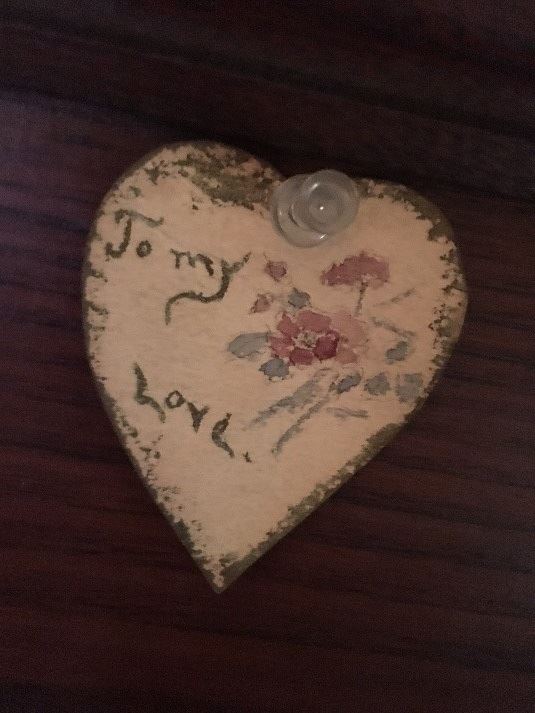 There is Percy’s bamboo chin-up bar irreverently fixed across the columns in the parlor. There are Percy’s pianos--all three squeezed into a small music room. Glancing around in the front hall lets you know right away that, while this large grand house was built by a banker to make a statement about his social position and place in society, the Graingers used it a little differently.
There is Percy’s bamboo chin-up bar irreverently fixed across the columns in the parlor. There are Percy’s pianos--all three squeezed into a small music room. Glancing around in the front hall lets you know right away that, while this large grand house was built by a banker to make a statement about his social position and place in society, the Graingers used it a little differently.
To the Graingers it was home. Percy and his mother, Rose, moved here in May 1921. Percy took the summer off from his near-constant touring schedule to settle in and help Rose unpack the shipment from London. (They had left on a moment’s notice as WWI broke out, and their furniture had been hastily packed away in 1914.) But at the end of April 1922, the ailing Rose took her own life and Percy was at loose ends over the death. Percy saved pages from the New York Times, carefully chosen for the fact that they contained tragic stories, wrapped the brass bed from Rose’s room, and placed it in the attic. The porch swing where they sat to enjoy summer 1921 was taken down and placed in the attic, too. There they remain.
 In 1928, after her marriage to Percy (in the Hollywood Bowl!), Ella Viola Strom moved in to 7 Cromwell Place. She must have sensed that she was stepping into Rose’s home. Rose’s dishes were still in the pantry, her mementos and family pictures still in her room. Percy and Ella dressed in their wedding finery and had photos taken by the front stairs. A new era was starting at 7 Cromwell.
In 1928, after her marriage to Percy (in the Hollywood Bowl!), Ella Viola Strom moved in to 7 Cromwell Place. She must have sensed that she was stepping into Rose’s home. Rose’s dishes were still in the pantry, her mementos and family pictures still in her room. Percy and Ella dressed in their wedding finery and had photos taken by the front stairs. A new era was starting at 7 Cromwell.
Not everyone was so happy about Ella’s arrival. Frederick
Morse was the leading portrait photographer in White Plains and his wife Tonie was the niece of Percy's concert agent Antonia Sawyer. Fred and Tonie were Percy’s friends and had long stayed in the house while Percy was away (and he was always away-- his list of concert dates is astounding.) The Morses knew that Ella had met Percy on a trip returning from Australia, and that she had been in Australia visiting her lover, Iyemasa Tokugawa. To remind her that they knew her background, and possibly suspicious of her present motives, the Morses had the dining room papered in an Asian-themed wall paper.
Ella got the message. The dining room was recovered in a more suitable style. The Morses were moved next door to a house (no longer standing) that Percy built for them at 9 Cromwell.
 Ella lived at 7 Cromwell for the rest of her life. Recipes in her handwriting are still in the kitchen. Her stuffed-to-overflowing sewing stand sits in the dining room. One of her most poignant touches are the tiny artworks and jottings she left around remembering Percy: a tiny heart tacked on his bedroom door, a note placed on a promotional poster for some concert or that other where a little yellow sticky notes that “this captures the serious look at PG often had,” and sometimes the beginning of a sketch on the back of a receipt from a New York shop “Tappe Mode.” Also prominently displayed in the living room are several of Ella's "rime tiles" -- exquisite ceramics Ella crafted with her own poems and illustrations etched in.
Ella lived at 7 Cromwell for the rest of her life. Recipes in her handwriting are still in the kitchen. Her stuffed-to-overflowing sewing stand sits in the dining room. One of her most poignant touches are the tiny artworks and jottings she left around remembering Percy: a tiny heart tacked on his bedroom door, a note placed on a promotional poster for some concert or that other where a little yellow sticky notes that “this captures the serious look at PG often had,” and sometimes the beginning of a sketch on the back of a receipt from a New York shop “Tappe Mode.” Also prominently displayed in the living room are several of Ella's "rime tiles" -- exquisite ceramics Ella crafted with her own poems and illustrations etched in.
The Grainger story is written room-to-room at 7 Cromwell Place. If you forget, just look around.